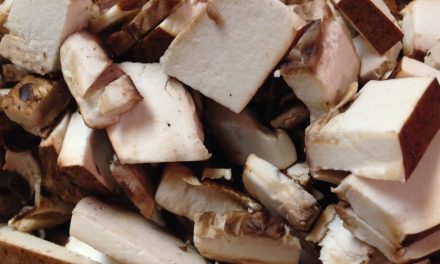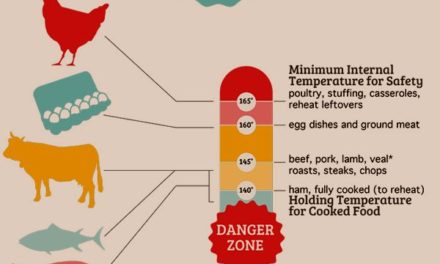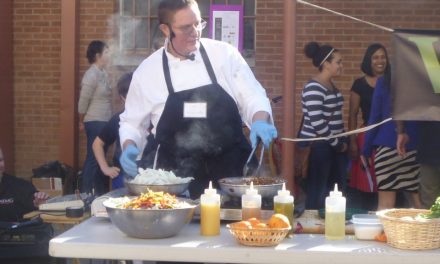When I introduce myself as a chef, I get asked several common questions. What’s your favorite thing to cook? Where should I eat? What kind of knives do you like? What makes a good chef? These questions pop up frequently, no matter what conversation I am in. I’d rather talk about where the food came from, how it migrated, and got onto your plate. Or why the latest food fad is most likely an invention of advertisers to sell a product. But in order to quell answering on an individual level, I am addressing each of these questions in a series, starting with “What’s your favorite knife?”
Knives are personal. The way they feel, the way they balance in the hand. How the blade cuts through the food. Personally, I like a lighter knife, one that is easy to grip and that is very, very sharp. Cat Cora of Iron Chef fame uses a 13″ chef’s knife, and she’s 4’11”. Intimidating? Yes. Necessary? When you are that short and working in a “man’s” world, wielding a large knife can help intimidate your co-workers.
Good Knives
One of the top complaints I hear from people who try to cook at home is that they hate to prepare the food. The way to combat this hate is to invest in a good set of knives, keep them well sharpened, and learn how to use them properly. Feeling a sharp blade cut through a carrot can be empowering. Facing that pile of onions that need to be chopped for a French onion soup is less fearful with a sharp blade made of good steel. Hate melts away like butter with a good Gyuto in hand.
It’s interesting that while the language of cooking is primarily French, the language of knives is Japanese. Here is a thorough description of Japanese knives with pictures.
There are many types of knives and brands. Shun has a 37-fold Damascus steel blade for $1,200. I’ve touched this knife, watched as it punched through paper and left a clean cut. Did my chef bring that knife out to the prep table? Hardly ever. It’s a $1,200 knife reserved for very special projects, not daily use.
My Knives
The brand I use today is called Oishi, They are a 17-fold, dimpled (usually called watermark) steel blade made in a village at the base of Mt. Fuji. They are made for delicate knife work as well as the more practical everyday jobs. With the 10” chef’s knife I can slice through proteins and with the santuko I can cut through mounds of produce. The 4” utility knife is great for paring and peeling, as well as trimming vegetables.
I bought this set of knives only after I knew each and every cut in the culinary vocabulary and I had gained the ability to slice and dice without thinking or blinking. I was able to retire my old workhorse knives, my Forschners – a hefty American-made blade that is less flexible and harder to keep sharpened. They served me well in banquet prep, but once I moved into fine dining, well, the name implies it: fine knife work. These knives cost me some money, but the investment in the proper tools to do my job was worth every penny.
Cooks talk primarily about their knives. Sure alcohol and sex are part of the banter, but when a new cook is hired, we all flock to ogle their tool kit. Pride in a kitchen isn’t just about how well you can cook, it’s about what tools you used to get the food to the stove. And a well-armed cook is a successful cook.
Picking a Knife
How do you pick a knife? My recommendation, you have to feel, touch and test the knife. How does the balance feel? The steel? The point? Do you like a cleaver, a chef’s knife, 10” or 12”? If it feels right in your hand that is the knife you should use. There are online ordering services, but until you know which blade balances in your hand, refrain from ordering. Do the research. Check out the local knife shops if you have one. Compare prices. Then buy. Shiny does not always equal superior. Choose carefully, a good blade can last you a long, long time.
Where can you find the good knives, aside from the obvious department store fare? Look in your town or city, in your local neighborhood. Is there a knife dealer nearby? A local knife sharpening truck that sells knives? Most knife vendors have their favorite choices and are happy to explain each knife they carry in their store or on their van. In Phoenix we have a great shop that carries a variety of knives and brands, along with other necessary kitchen tools. They also have a grind house where they will sharpen and repair the blades that you already own.
Keep Them Sharp
I’ve spent some time traveling around, and cooking in other people’s homes. I’ve discovered that most people do not keep their knives in good condition. Usually the knives are dull and from a lower value department store; or that set you got for your wedding that sits in a corner of the kitchen ignored. Most people won’t have their knives professionally sharpened, and that’s a crime against a decent blade.
Dull blades make the work of slicing and dicing difficult. There are plenty of places to get knives sharpened. Even If you live out in the country you can learn how to take care of your blades. There are videos to watch to learn how. And you can order the tools online to take care of your knives. There really is no excuse for a dull blade.
Proper Knife Use
Good knives aren’t the only tools in a chef’s arsenal. There is practice. How did I get good at what I do? I watched, I learned, I paid attention. I studied. The types of knife cuts we learn, the way we handle a blade, and how we treat our subject, food, are all part of what makes a good chef. Practice makes perfect. Start out simple. Find some videos online on what the basic knife cuts are. Then copy. Cut mounds and mounds of potatoes until you get it right. (Potatoes are cheap and make good soup.)
Also practice on hard vegetables. Potatoes are pretty soft. Try carrots, turnips, beets as they are all hard root vegetables that aren’t easy to face. Are you likely to use turnips and beets in your cooking? That depends. Will you use carrots? Yes. Lots and lots of carrots for mirapoix in soups and sautés. Choose the vegetables that are in the dishes you want to cook. If you want to learn Asian cooking, study how to chop those vegetables. It is a different style than western vegetable prep. And then practice.
I helped one friend learn how to cut vegetables by directing her to these videos. She still came over for lessons (my reasons were selfish, I need a prep cook sometimes), but I was satisfied that she could replicate the process that was demonstrated.
Other ways to learn? Find some cooking classes in your area and sign up. There are a few retail chains that offer cooking classes. Some grocery stores provide free cooking demos. The local knife shop might offer knife lessons and knife care classes. Invest the time to learn. As you gain more skills your confidence will start to grow. Then you can start learning how to really cook.
Choosing the right knife is just the beginning of becoming a good cook. Check with us next time when I discuss what makes a chef. How we think. What it takes to get food on the plate and to the dining room. How palate plays a big part in what we do.
And keep your knives sharp!








